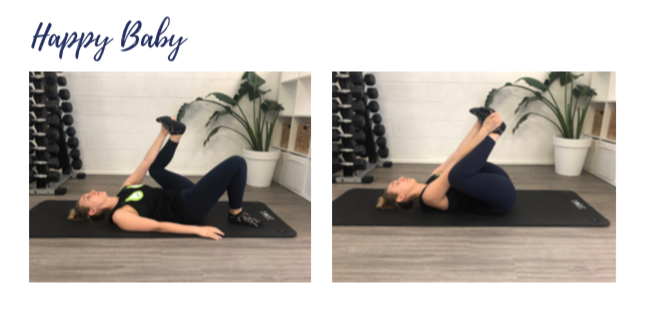How can I exercise with endometriosis?
Written by Esme Soan - Accredited Exercise Physiologist
Whilst everyone living with endometriosis (or Endo for short) is individual and has different symptoms and experiences, there are some general guidelines for using exercise as medicine every day! We often speak about a ‘toolkit’ to help with pain flares, that can include things like hands on therapy from a Pelvic Health Physiotherapist (like Sami & Patrice at Pear), massage, heat packs, aromatherapy, pain medications and….. exercise!
1. To be physically active as often as possible
What?
Walking, Swimming, Cycling, Gym classes, Yoga, Pilates, team sports - what ever makes you move that you love to do!
Why?
Endometriosis is an inflammatory condition - and exercise has the ability to increase anti-inflammatory markers. Physical activity also increases blood flow to the abdomen, which improves clearance of the by-products of inflammation - so you can see exactly how powerful exercise can be!
2. Restoring length and strength to the anterior muscles of the body
What?
What daily stretching series - check out our video at the link below! Here are also some pictures of how to perform your stretches.
Why?
Endometriosis pain can cause many of the muscles through your front line (ie/ abdominal muscles, chest, anterior hip) to become very tight and the posterior muscles can become weak. Think how those days spent in the foetal position, curled up tight. Our brain responds to pain by causing muscles to contract to ‘protect’, and restricts your movement - but this can actually contribute to making you feel worse.
When your abdomen is bloated, your pelvis is sore, and all you want to do is curl around a hot water bottle the idea of exercise probably feels like the last thing you want to do. However - our mobility exercises and stretching series really helps reduce the tension held in these muscles, increases your blood flow and can decrease your pain.
The pelvic floor can also become tight (yes - Pelvic Floor is a muscle too!) which can then lead to symptoms of urinary stress incontinence (leaking), constipation and lower back or hip pain. Pelvic floor muscles can’t be stretched externally (but you can work with our Pelvic Health Physiotherapists to learn how to perform internal releases) - however breathing work and stretching of surrounding muscles can really help.
There are also specific kinds of stretching exercises called PMR (progressive muscle relaxation) that has great improvements on pain. In PMR we need to think of first further contracting the muscle group - ie squeezing & working it further, before relaxing into the stretch of the muscle. This would be like squeezing your hands into fists before relaxing your hands out flat.
3. Using exercise individualised to YOU!
What?
Exercise is not a one size fits all - and doesn’t always need to look like star jumps or burpees!
Why?
Everyone is unique in their own body, strengths, weaknesses and Endo pains. Some may need to avoid excessive abdominal or pelvic floor contractions, HIIT training, Pilates and other high-intensity exercises - which can often not be the most supportive to your body when you have pain.
Throughout the month, in time with your cycle, try swapping your HIIT training for a yoga session, or coming and working with the team at Pear who would be able to modify exercises to what your body needs. The more you learn how to work with your cycle, the better we can become and supporting your body with movement medicine!





